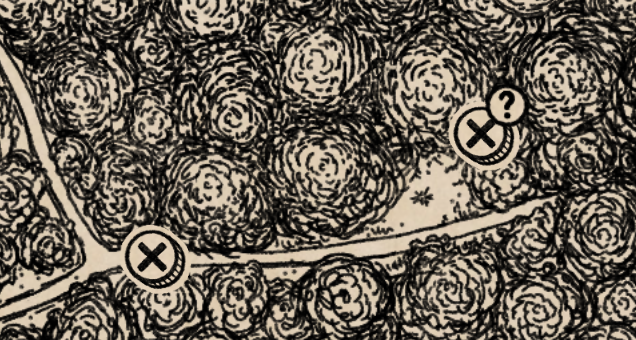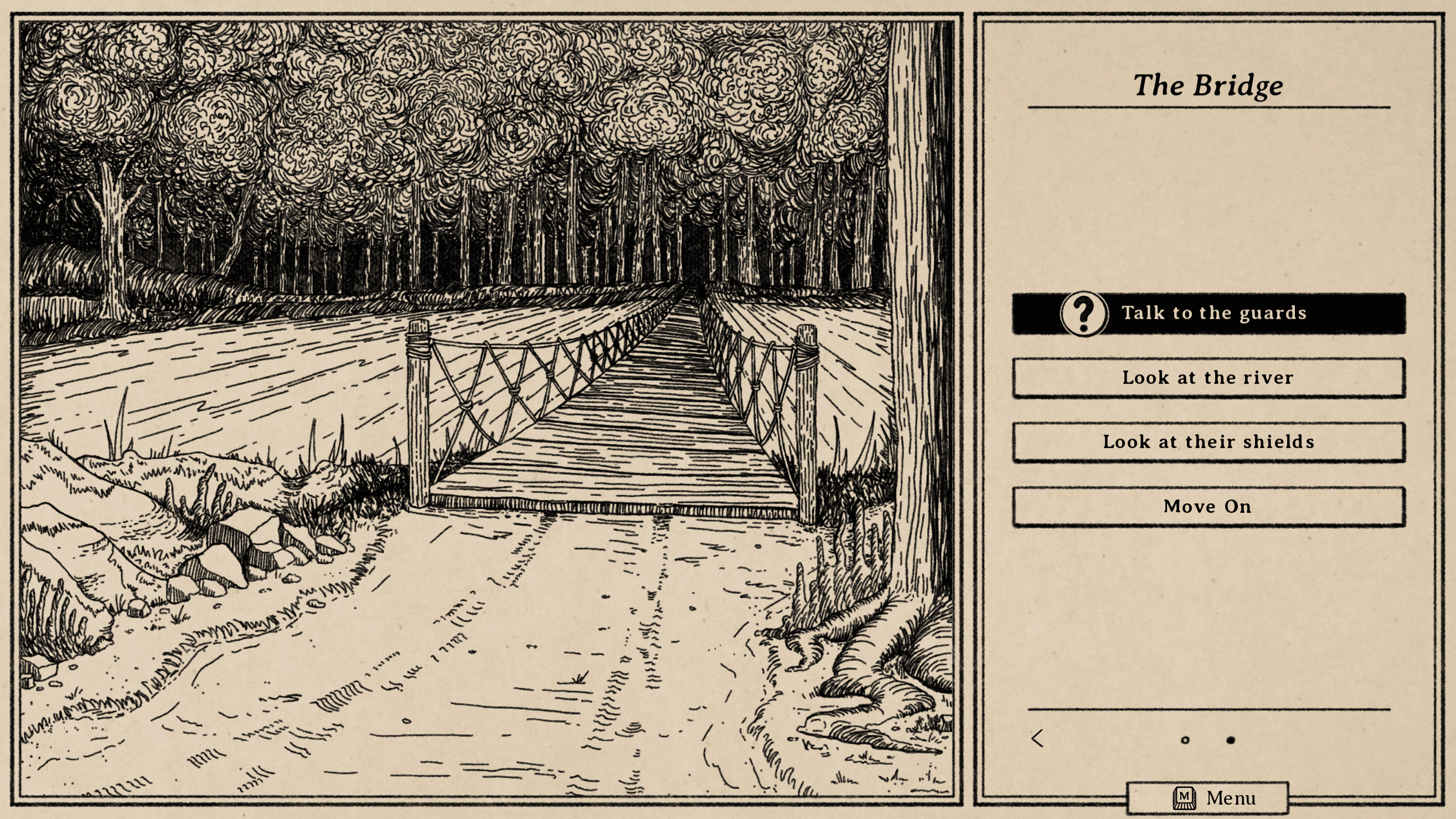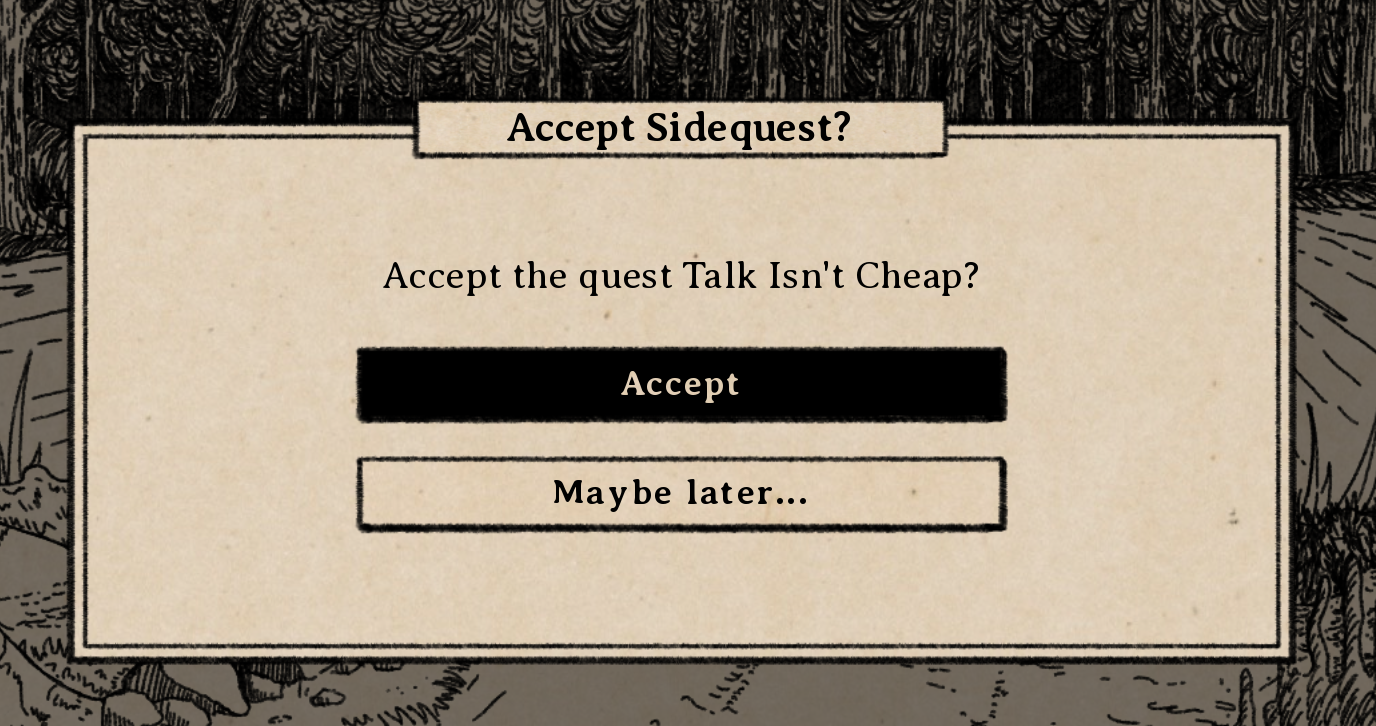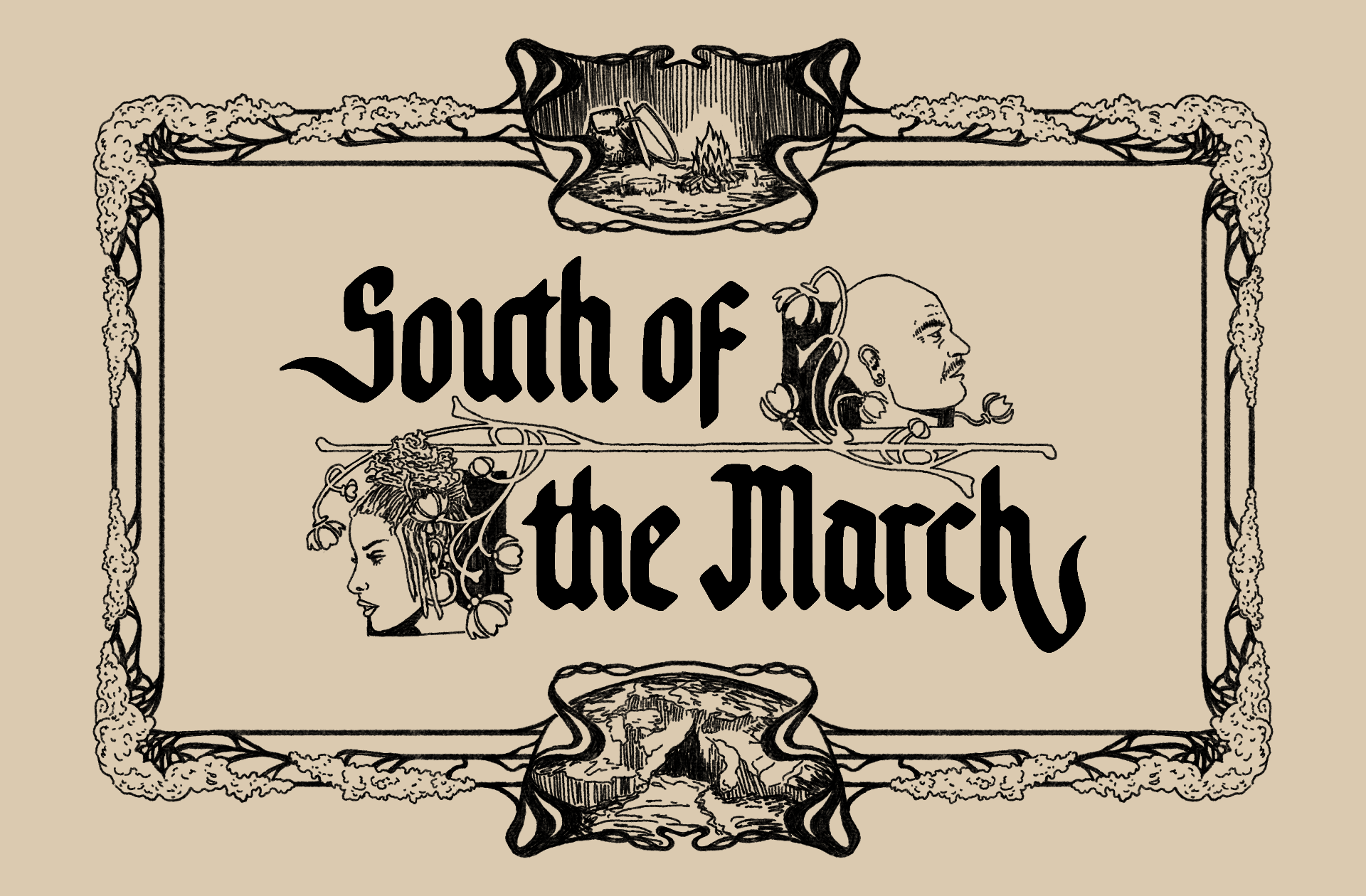Devlog #14: Sidequest Design
Progress Updates
Most of the work over the last couple weeks has been dedicated to:
- Art for the status effects (and art in general)
- More fleshing out of skills
- Sidequest writing and feature development
I talked about the status effects last time, so this time I'll focus a bit more on what's going on with sidequests.
Sidequests
South of the March is an RPG, and it wouldn't be a proper RPG with sidequests. I've had the core mechanics built out for a while now, but I've only recently been fleshing them out and writing full dialogue, which has in turn led to building out a few more submechanics to make everything actually work. As you're progressing through the game, you'll periodically see nodes on the map marked with a "question mark" icon, letting you know that there's a sidequest available there.

These will often/usually be in places you've already visited, so as not to clutter the forward momentum of the narrative. Once you visit the marked location, you might find that the description has changed, and you'll have a marked option that leads you into the sidequest.

Quests as Substories
One important choice in the overall design of these sidequests is that they aren't meant to be time pressure situations or branching choice paths, which some visual novel or adventure game players may expect. They pull much more from the JRPG side of the genre inspiration, but to be clear, they aren't "collect 5 spiderling silks"-style fetch quests, either. Instead, they're meant to present small, multi-part narratives that enhance world-building and character development (and reap some gameplay rewards) without directly impacting the main story.
There a few main design principles I'm sticking to as I build these out:
- Can't Be Missed: While sidequests will become available at different times depending on narrative progress or exploration, it's not possible to be permanently locked out of any at any point. No matter what you do in the game, you will be able to complete all of the sidequests if you want to (other than a clearly-communicated "point of no return" toward the end of the game).
- Can't Be Failed: There is no "fail" state for any sidequests, officially or unofficially. I know different people will feel different ways about this one, but I myself often become overwhelmed or annoyed in RPGs when quests leave me feeling that I've "messed up" somehow. Often I end up glued to a guide trying to ensure that I experience the story "correctly," sometimes to the point that the entire narrative becomes kind of a meta experience for me. You might die in combat, but you won't just"fail" from choosing the wrong thing.
- Player Choice to Start: Sidequests may not be available until certain points in the story, but once they are, it's up to the player's discretion (and an explicit agreement to begin) before they start. You won't be derailed from some pivotal moment in the main story, for example, by running into a sidequest that just starts unfolding before you, but you can also be certain that you won't be missing out if you choose to ignore it for the time being. You can come back when you're ready.

Despite the obvious gameplay and setting differences, a major influence in the development of this game is the Yakuza franchise (now called Like a Dragon), particularly in the way that series handles sidequests. In the Yakuza games, they're referred to not as sidequests at all, but as "substories," which I think captures the design intent in a really graceful way. They're like short stories that flutter around the margins of the main story, not always necessarily goal-oriented, and often nearly standalone in their narrative, yet doing an incredible amount of work to deepen your relationship with both the characters and the world.
Similarly, sidequests in South of the March are multi-part short stories that, once discovered, you can embark on at your leisure, creating your own pace alongside the main story, meeting new characters, and discovering gameplay rewards that you won't be able to find anywhere else.
South of the March
Adventure and horror in a hand-drawn fantasy RPG
| Status | In development |
| Author | Small Gray Games |
| Genre | Role Playing, Adventure, Visual Novel |
| Tags | Dark, Fantasy, Hand-drawn, Horror, Medieval, Story Rich, Text based, Turn-Based Combat |
| Languages | English |
| Accessibility | Color-blind friendly, Subtitles |
More posts
- Devlog #20: Combat Speed & Status Effects46 days ago
- Devlog #19: Designing New Map NodesSep 02, 2025
- Devlog #18: Projects on ProjectsAug 16, 2025
- Devlog #17: Post-Holiday UpdatesJan 04, 2025
- Devlog #16: Demo Work & Video PreviewDec 10, 2024
- Devlog #15: Demo Plans & Additional PlatformsNov 18, 2024
- Devlog #13: Tutorials & Status EffectsOct 07, 2024
- Devlog #12: New Animations & Accessibility UpdatesSep 17, 2024
- Devlog #11: Accessibility DesignAug 27, 2024

Leave a comment
Log in with itch.io to leave a comment.